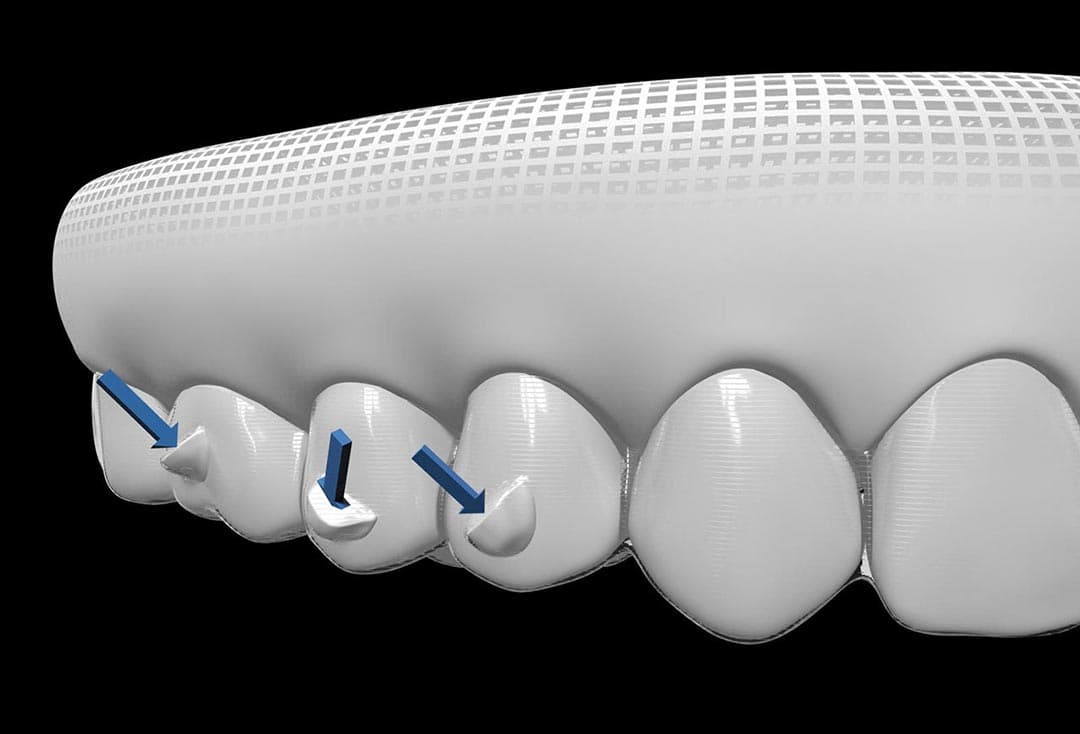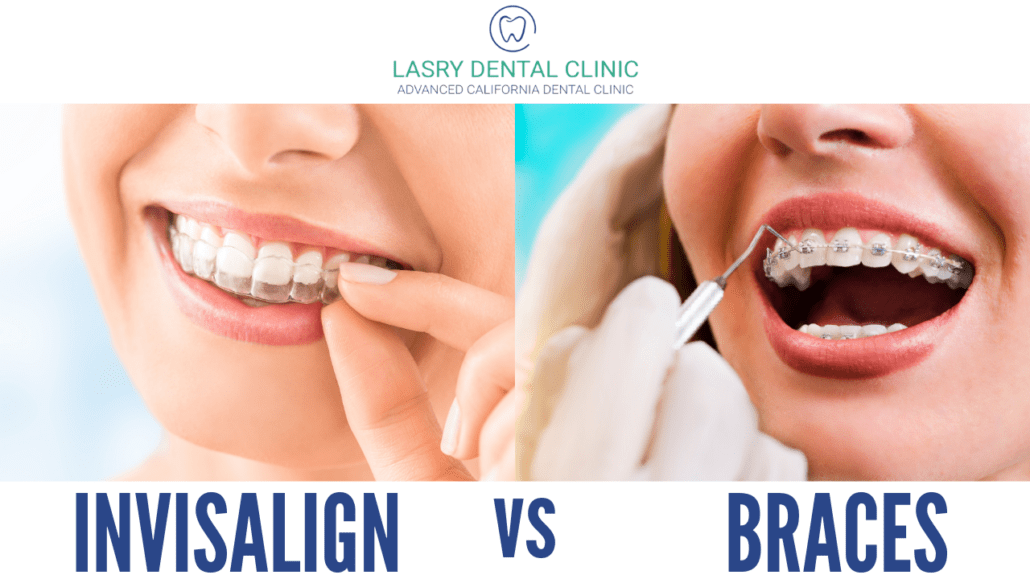Frequently Asked Questions Regarding Invisalign: Everything You Required to Know
Frequently Asked Questions Regarding Invisalign: Everything You Required to Know
Blog Article
Invisalign vs. Typical Braces: Which Choice Is Right for You?
When thinking about orthodontic therapy, the selection in between Invisalign and typical braces offers several essential variables that merit cautious examination. Invisalign supplies a very discreet choice with removable aligners, while conventional dental braces give an extra noticeable yet reliable remedy for extreme imbalance. Each choice encompasses unique benefits and disadvantages related to appearances, comfort, therapy period, and cost. Recognizing these nuances is vital for making a notified decision that straightens with your individual choices and way of living. The concern remains: which choice will best satisfy your orthodontic needs and expectations?
Introduction of Treatment Choices

In comparison, traditional braces contain metal braces and cables that are bonded to the teeth. This approach applies continual stress over time to accomplish positioning. While effective for complicated orthodontic issues, typical dental braces call for routine gos to for modifications and can posture challenges in maintaining oral hygiene because of the difficulty of cleaning up about wires and brackets.
Both choices have their qualities, and the choice frequently depends upon certain oral problems, way of living preferences, and individual conformity. Eventually, getting in touch with an orthodontic specialist is crucial for identifying one of the most suitable treatment strategy customized to specific demands. Recognizing the subtleties of each choice can considerably influence the general success of orthodontic treatment.
Aesthetic Considerations
A substantial element influencing the choice in between Invisalign and typical dental braces is the visual allure each therapy uses. Invisalign aligners are crafted from clear plastic, making them essentially undetectable when used. This discreet look is especially attracting young adults and adults who might really feel self-conscious regarding their orthodontic treatment. The ability to keep a natural smile throughout the alignment process can significantly boost the individual's confidence in social and professional settings.
On the other hand, typical braces include steel brackets and cords, which can be a lot more noticeable. While improvements in orthodontic technology have actually brought about the advancement of smaller sized brackets and tinted elastics, traditional dental braces still maintain an even more conspicuous profile. For some individuals, the exposure of braces may discourage them from looking for necessary treatment.
Eventually, the choice in between Invisalign and typical braces may rest on individual preferences regarding aesthetics. Individuals that focus on discernment typically favor Invisalign, while those who are much less worried about exposure might choose traditional braces. Comprehending the visual implications of each option is vital for making an educated choice that aligns with one's lifestyle and preferences.
Comfort and Convenience

In regards to ease, Invisalign aligners are removable, making it possible for patients to appreciate their favored foods without limitation and maintain optimum dental hygiene. Cleaning and flossing are streamlined, as the aligners can be secured during these regimens, whereas typical braces require mindful navigating around braces and cables.
Additionally, Invisalign's dynamic system enables fewer orthodontic visits. People typically receive multiple collections of aligners at the same time, which can improve the therapy process and lower time spent in the orthodontist's chair. In contrast, typical dental braces require routine modifications, making them much less hassle-free for those with hectic schedules. Invisalign. Generally, the comfort and comfort of Invisalign make it an appealing option for numerous people seeking orthodontic treatment.
Treatment Duration and Performance
While both Invisalign and traditional braces are efficient in dealing with dental misalignments, the duration of therapy can differ considerably in between both choices. Generally, why not try here Invisalign treatment can take anywhere from 12 to 18 months, depending upon the intricacy of the instance. The clear aligners work by gradually shifting teeth into their preferred settings, and routine follow-ups with an orthodontist aid make sure development continues to be on course.
On the other hand, typical dental braces often require a longer dedication, normally ranging from 18 months to three years. This results from their set nature and using brackets and wires, which can be more effective for severe misalignments and complex cases he has a good point (Invisalign). The therapy efficiency of standard dental braces is well-documented, as they enable for accurate modifications and greater control over tooth activity
Inevitably, the selection in between Invisalign and conventional braces may rest on both the awaited therapy period and the specific oral issues handy. Consulting with an orthodontist is essential, as they can offer tailored recommendations based upon specific requirements, making sure the selected technique aligns with desired durations and end results.
Expense Comparison and Insurance Alternatives
Expense plays a considerable role in the decision-making procedure for individuals considering orthodontic therapy, whether selecting Invisalign or conventional dental braces. Typically, the cost of Invisalign arrays from $3,000 to $8,000, while conventional dental braces commonly cost in between $2,000 and $6,000. Aspects influencing these prices include the intricacy of the case, the duration of treatment, and geographical area.
Insurance insurance coverage can substantially impact out-of-pocket expenditures. Numerous oral insurance strategies provide partial protection for orthodontic treatments, however the specifics can differ widely. It is vital for clients to assess their insurance coverage to determine the degree of insurance coverage for either option. Normally, standard dental braces may be extra frequently covered by insurance coverage strategies compared to Invisalign, which some insurance firms categorize as an aesthetic procedure.
Additionally, several orthodontic techniques supply flexible payment plans, making both basics treatment options much more easily accessible. People ought to ask about possible funding alternatives and discounts for upfront repayments. Assessing the overall expense, including insurance coverage advantages and payment plans, is vital for making a notified decision that lines up with both aesthetic preferences and budget considerations.

Conclusion
In summary, the choice in between Invisalign and standard dental braces rests on several elements, including aesthetic choices, convenience, treatment duration, and price. Invisalign supplies a very discreet, detachable choice that helps with oral health and dietary flexibility, while traditional braces might be better for complicated dental concerns and usually come at a lower rate point. Ultimately, consultation with an orthodontist is essential to analyze private situations and determine one of the most proper treatment alternative for accomplishing optimal oral alignment.
When considering orthodontic therapy, the option between Invisalign and typical braces offers a number of important aspects that merit mindful assessment.Comparing Invisalign and conventional braces exposes distinct therapy options for orthodontic modification.While both Invisalign and traditional dental braces are effective in dealing with dental imbalances, the duration of therapy can differ substantially in between the two alternatives.Cost plays a substantial function in the decision-making procedure for individuals thinking about orthodontic therapy, whether opting for Invisalign or standard braces.In summary, the option in between Invisalign and traditional dental braces pivots on multiple elements, consisting of visual choices, convenience, therapy period, and price.
Report this page